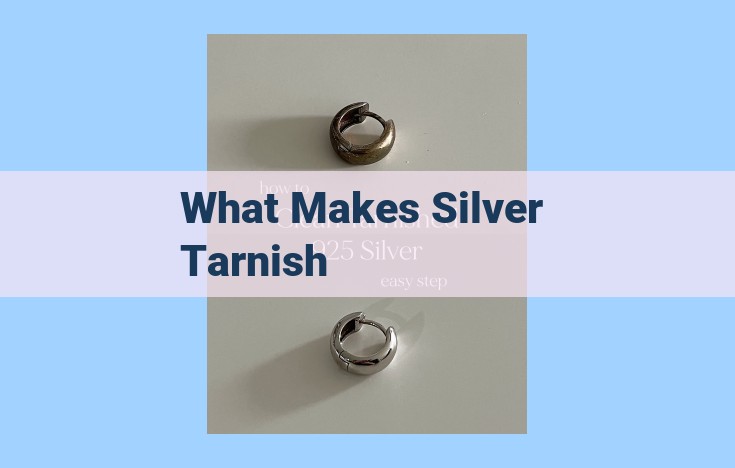Understanding Silver Tarnishing: Causes, Prevention, And Solutions

Tarnishing, the darkening of silver, occurs when it reacts with sulfur-containing compounds in the air, forming silver sulfide. Silver sulfide is a dark, tarnish-causing compound that forms on the surface of the metal. Exposure to hydrogen sulfide gas, often present in industrial areas or near certain foods, can also contribute to tarnishing. Humidity and temperature also play a role, with higher humidity and warmer temperatures accelerating the tarnishing process.
Understanding Tarnishing: The Blight of Metals
In the realm of metals, tarnishing reigns as a formidable foe, relentlessly attacking their once-radiant surfaces. This electrochemical process leaves behind a dull, discolored patina, marring the aesthetic beauty and diminishing the intrinsic value of these precious materials.
What is Tarnishing?
Tarnishing occurs when a metal reacts with external elements, forming a thin layer of corrosion on its surface. This corrosion is not simply a cosmetic blemish; it can compromise the structural integrity of the metal, weakening it and potentially rendering it unusable.
Common Culprits: A Tarnish-Promoting Ensemble
Various elements conspire to inflict tarnishing upon metals. Oxygen stands as a primary culprit, oxidizing the metal’s surface and forming metal oxides. Sulfur and hydrogen sulfide, prevalent in polluted environments or certain foods, also contribute to the tarnishing process, creating unsightly sulfides and tarnishing films. Silver compounds, often present in alloys such as sterling silver, can accelerate the formation of tarnish.
Factors Influencing Tarnishing: The Impact of Environment
When it comes to the tarnishing of metals, the environment plays a crucial role. Humidity, temperature, and light act as catalysts, accelerating the tarnishing process and leaving your precious possessions looking dull and lackluster.
Humidity: The Watery Culprit
Imagine a room filled with water vapor. As the air becomes more humid, it’s like inviting tiny droplets of water to mingle with your metal surfaces. These droplets act as a bridge between the metal and oxygen, allowing the tarnishing process to flourish.
Temperature: Heat Up the Reactions
Just like a warm oven speeds up baking, warmer temperatures can accelerate tarnishing. As the temperature rises, the molecules involved in the tarnishing process become more energized and active, increasing the rate at which your metals tarnish.
Light: The Silent Accelerator
While sunlight may provide warmth and life, it can also be a hidden enemy of your metals. Ultraviolet (UV) rays are emitted by both the sun and artificial light sources, and they can penetrate metal surfaces, triggering chemical reactions that lead to tarnishing.
So, if you want to keep your metals looking their best, be mindful of the environment they’re exposed to. Keep them away from excessive humidity, control the temperature, and shield them from direct sunlight. By understanding these environmental factors, you can slow down the tarnishing process and preserve the brilliance of your metal treasures.
Prevention Techniques: Preserving Your Silver’s Shine
To safeguard your precious silver from the relentless assault of tarnishing, there are two tried-and-tested methods at your disposal: polishing and anti-tarnish treatments.
Polishing: A Timeless Technique for Restoration and Protection
Polishing is a classic solution, not only restoring your silver’s luster but also creating a protective barrier against future tarnishing. Buffing your silver with a soft cloth or brush gently removes existing tarnish, leaving behind a brilliant and pristine surface. Regular polishing helps maintain your silver’s beauty while significantly reducing the rate at which it tarnishes.
Anti-Tarnish Treatments: A Modern Safeguard for Your Silverware
Modern science has come to the aid of silver owners with a range of anti-tarnish treatments. These treatments act as a shield against the environmental culprits that cause tarnishing, forming a protective layer over your silver. Lacquers and coatings are popular options, effectively preventing oxygen and moisture from reaching the metal’s surface. The effectiveness of these treatments varies depending on the specific product and application method. Follow the instructions carefully to ensure optimal protection for your silver.